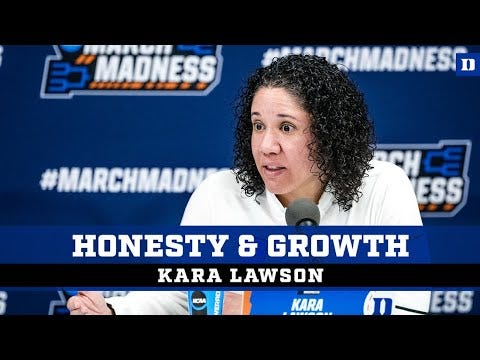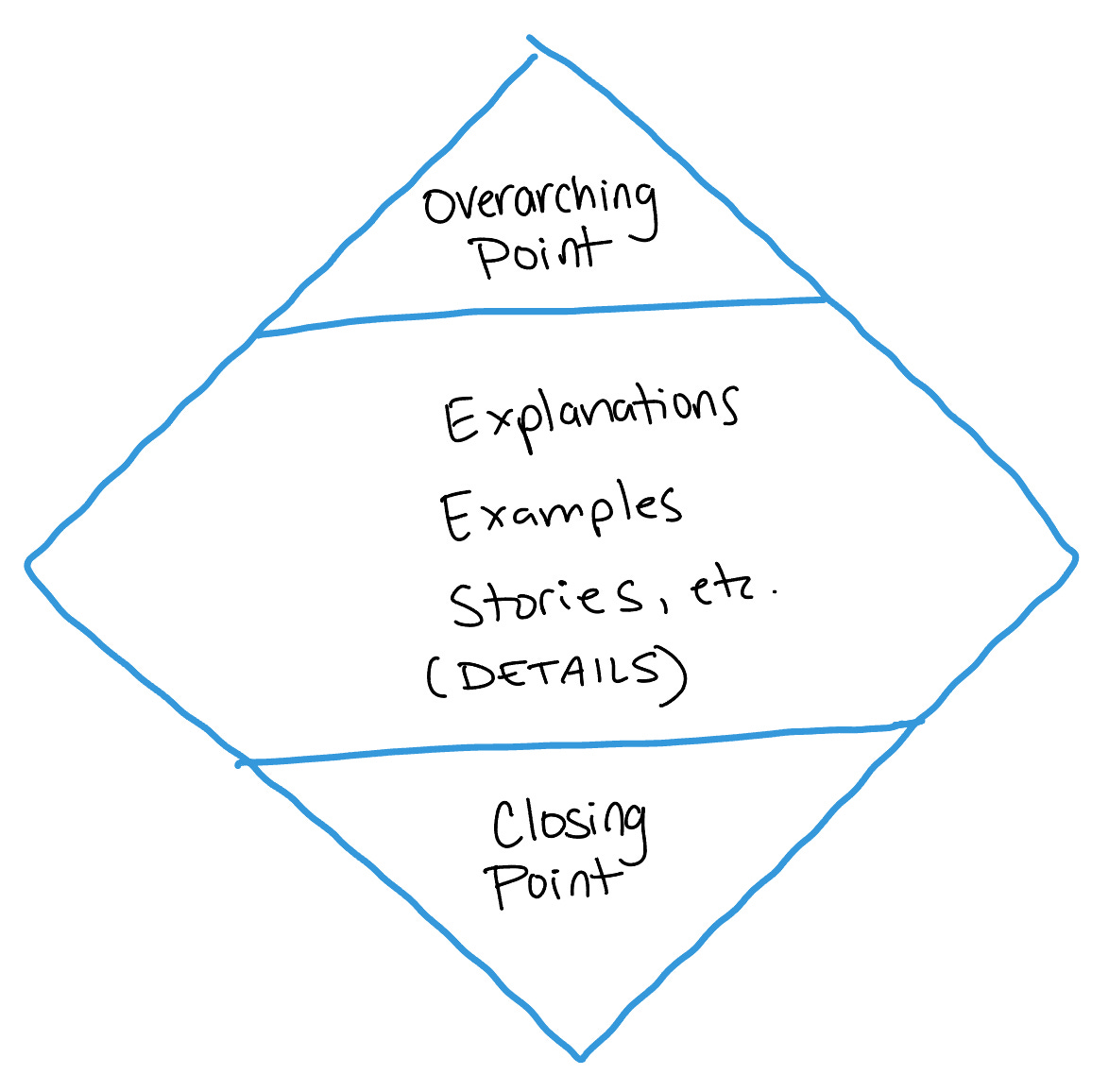How Great Coaches Speak #24
What Head Coach Kara Lawson can teach you about being a better speaker
If you’re interested in bringing communication or presentation skills training to your organization, let’s talk:
The 24th coach in this series is Kara Lawson, Head Coach of Duke Women’s Basketball.
Coach Lawson was the very first coach I featured in this series back in January 2022. If you’re interested in reading that post, click HERE.
As you watch this 1:20-minute clip, there are two things I want you to notice about Coach Lawson’s speaking:
Her sustained eye contact and active gestures.
The structure of her message: Overarching point (“be coachable”) > explanation and examples of what that means > conclusion (our success is because of our willingness to be coachable).
There’s no shortage of videos of Coach Lawson delivering thought-provoking and inspiring messages.
Like this, and this, and this.
You might watch these clips and dismiss them, thinking you could never speak off the cuff with such clarity and poise.
But here’s the thing…
She’s not (really) speaking off the cuff.
Her spoken messages come from years of reflection, thoughtful consideration, and conversation. Her public speaking reflects her private thinking.
Two specific things you can learn from Coach Lawson:
1/ How to use your nonverbals to create connection and understanding.
Go back and watch Kara’s eyes for the length of the clip, noticing how long she sustains eye contact with the reporter in her audience. She only breaks that eye contact (maybe) five times to look toward her athletes sharing the media table and glance away to consider her thoughts.
Now consider how her focused eye contact impacts your perception of her.
Do you find her to come across as confident? sincere? competent? trustworthy? engaging?
Also consider how you would behave if you were the reporter Kara was speaking to. Would you feel compelled to pay attention because of her direct eye contact? Likely.
It’s a similar story for her gestures.
A few things I noticed:
She keeps her hands up on the table so she can gesture when she feels compelled to. If she had kept her hands below the table on her lap, she’d be less inclined to use them.
Her gestures are expressive: signaling toward her athletes, asserting her important points, matching the cadence and intensity of her message.
She often gestures up off of the table and slightly outside of her body. This increases her physical “presence.” She’s not afraid to take up space.
Overall, her gestures create understanding. They convey the underlying emotion of her message and hierarchy of importance of her points.
Don’t fool yourself into believing Coach Lawson possesses some inaccessible special talent for public speaking. She simply has an understanding of, and appreciation for, the power of congruency in nonverbal and verbal communication.
2/ How to structure your message so it’s easy to follow along with and understand.
Here’s a transcription of Kara’s message with some notes to help you visualize the structure:
I like to think of organizing messages in the shape of a diamond:
Most of your messages should begin with a brief statement or summary of your main point or conclusion, followed by an elaboration of that point and supporting evidence, and end with a brief conclusive statement or summary of your message.
Considering structure when you communicate is critically important, yet many of us don’t. We speak whatever thoughts come to mind and do our best to weave logic through them as best we can.
Structure should be a forethought, not an afterthought.
Before you speak, you should ask yourself questions like:
If I had to summarize my message in a single sentence, what would I say? (Say this first)
What are 1-3 smaller points that support my main, overarching point or conclusion?
Why is this important for this specific person or audience to know?
What DON’T they need to know?
What else did you learn from watching Coach Lawson? Share them with me in the comments 👇
If you enjoyed this post, please hit the ❤️ button and share it with someone who might enjoy it too.
Thanks for reading!
Jenny





